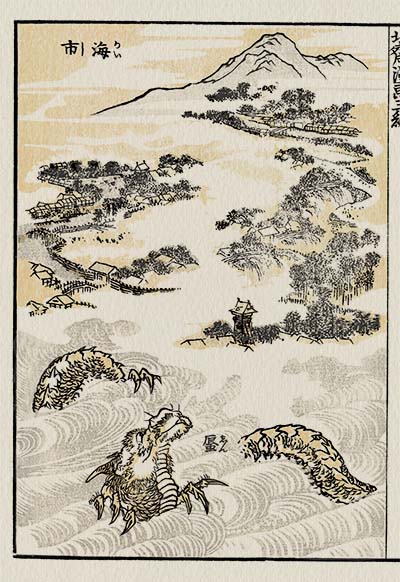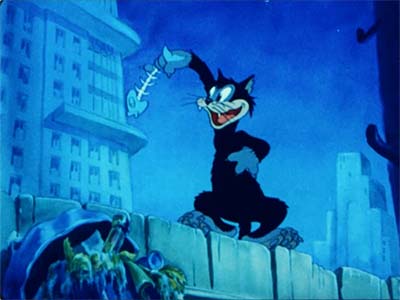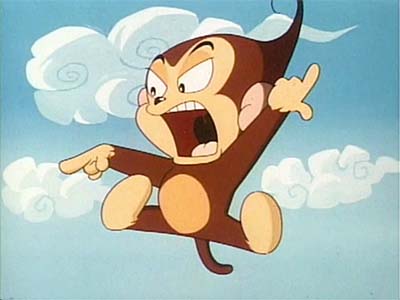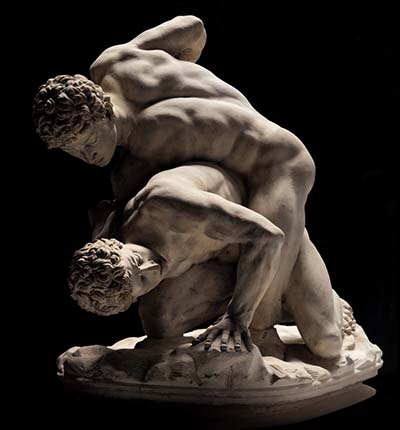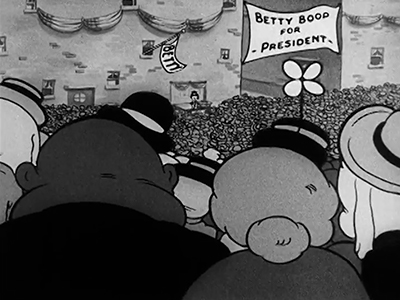
View At YouTube
Every other month, Animation Resources shares a new Reference Pack with its members. They consist of e-books packed with high resolution scans video downloads of rare animated films set up for still frame study, as well as podcasts and documentaries— all designed to help you become a better artist. Make sure you download this Reference Pack before it’s updated. When it’s gone, it’s gone!
JOIN TODAY To Access Members Only Content
The latest Animation Resources Reference Pack has been uploaded to the server. Here’s a quick overview of what you’ll find when you log in to the members only page…
Hokusai Manga Volume 3![]()
Katsushika Hokusai / 1814
Download this article
Katsushika Hokusai was arguably the greatest artist Japan ever produced. Best known for his monumental set of woodblock prints titled Thirty-Six Views of Mount Fuji, his career spanned more than 75 years, and in his lifetime he produced more than 30,000 paintings, sketches and woodblock prints. Japan was closed to the Western world while Hokusai was living and working, but it didn’t take long after Japan’s borders were opened to the world for his fame spread to the West. He is now regarded as one of the greatest artists in the entire history of art.
Hokusai’s fame attracted talented young artists, eager to study under him. He took on 50 pupils over the years. In 1812, he found himself in need of some quick money, and decided to publish an art manual called Quick Lessons In Simplified Drawing. The book was surprisingly successful, so the following year, he published the first volume of a series of sketchbooks known as Hokusai Manga. At that time, the word “manga” meant “random drawings” and that is exactly what his first volume consisted of… scenes of everyday life, animals, plants, landscapes, rendering experiments… the book contained very little text, just lots and lots of amazing drawings.
The volunteers of Animation Resources have taken great pains to insure that Hokusai’s genius is not undermined by poor reproduction. Hundreds of hours of careful digital restoration has gone into this e-book to create the ultimate version of Hokusai’s masterwork.
Three Transitional MGM Cartoons
![]()
“The Bookworm Turns” 1940 / “The Alley Cat” 1941 / “The Stork’s Holiday” 1943
Throughout their careers, Hugh Harman and Rudy Ising pushed to produce films with high production values to compete with Disney on his own turf. This ended up causing friction with the studios that financed their cartoons. There was no set footage limit for their shorts. Many of them run three or four minutes longer than other studios’ cartoons. The emphasis on lavish backgrounds and full animation became so much of a focus at times that entertainment value suffered. It was all eye candy and overlapping action with very little humor. Rudy Ising was once quoted as saying that he aspired to make a cartoon without a single gag… and with a couple of his films, he might have actually succeeded at that. Their cartoons were needlessly complex, over-animated and had timing that was sluggish to the point of dragging.
Clearly, this couldn’t continue. MGM fired Harman and Ising in 1937 and created an in-house animation studio. But they required the team’s experience to produce shorts on a schedule, so they hired them back the following year to work with a team of younger artists. The shorts produced in this transitional time didn’t exhibit the influence of the young blood at first, but after a year or two the humor in the shorts became more focused. In particular, the influence of Bill Hanna made a pronounced improvement on the timing. Action became snappier and the pacing of the cartoons sped up. Eventually, Hanna would partner with Joe Barbera to direct “Puss Gets The Boot”, the first Tom & Jerry cartoon, which would set the house style for the studio for the next two decades.
JOIN TODAY To Access Members Only Content
Two Films By Hans Held
![]()
The Troublemaker 1940 / Baron Munchausen 1944
Download this article
In previous Reference Packs, we’ve featured films by the German animator Hans Fischerkoesen. Drafted by Joseph Goebbels to produce animated films for the Nazi regime and charged with building a studio to rival Walt Disney, Fischerkoesen succeeded in making some remarkable cartoons that largely avoided straying over the line into being outright propaganda. Today we feature one of Fischerkoesen’s peers, Hans Held, who wasn’t quite as lucky or successful.
Sometimes we can learn as much from bad examples as good ones. Hans Held is an example of an artist who was skilled in the medium of live theater and live action movies, but was wrongly cast as an animator by Joseph Goebbels. These films also show that as persuasive as animation can be, there needs to be a certain core of humanity if one wants the audience to embrace the idea. The Nazis were ill suited to compete with Walt Disney, who had his finger on the pulse of middle America and strove to serve his audience, not force his audience to serve his ideology.
Well, Just You Wait Ep.07
![]()
Vyacheslav Kotyonochkin / Soyuzmultfilm, Russia / 1973
We continue the Russian Wolf and Rabbit cartoons with episode 07, “Cruise Ship At Sea”.
The premise of Nu, Pogodi! (which translates into English as Well, Just You Wait!) was pitched by a writing team of satirical humorists to many directors at Soyuzmultfilm, but was rejected every time. Finally in 1969, Gennady Sokolsky agreed to direct a 2 1/2 minute pilot for the series in an omnibus film called “Happy Merry Go Round”. The general consensus at the studio was that the cartoon was “low class” and beneath the dignity of Soyuzmultfilm, but director Vyacheslav Kotyonochkin strongly believed in the concept, so the studio decided to take a chance and allow him to direct a few episodes… and then a few more… and then more.
Kotyonochkin was proven correct. The cartoons were a huge success. Between 1969 and 2006, Soyuzmultfilm ended up making 22 episodes, and in a 2014 poll of audiences all over Russia, Well, Just You Wait! was voted the most popular cartoon series of all time by a landslide. Although the series resembles both Tom & Jerry and the Roadrunner and Coyote series, the director, Kotyonochkin claimed not to have ever seen any of these Hollywood cartoons until 1987 when his son got a video tape recorder and Western tapes began to be imported.
JOIN TODAY To Access Members Only Content
Dog, Cat And… Ep 06![]()
Jaroslaw Jakubiec & Jan Siupik / Studio Miniatur Filmowych, Poland / 1972
In this Reference Pack, we are sharing another short cartoon from a series produced by Studio Miniatur Filmowych, Pies, Kot I… which translates to Dog, Cat And… The episode is titled "Vacuum Cleaner".
This series is a different sort of take on the Tom & Jerry model, with the opponents outsmarting each other instead of just chasing each other out of hate or hunger. There is more to the relationship between the characters than just rivalry. The relationship of the characters makes it easy to see how it relates to slapstick comedy teams like Laurel & Hardy and Fatty Arbuckle and Buster Keaton. The dog and cat are not just generic animals, but individual personalities with a dynamic relationship that is much more engaging than most “cat and mouse” or “dog and cat” cartoons.
These cartoons are almost devoid of dialogue with the focus on loose, funny animation. In fact, the drawings are often hilarious on their own, even removed from their context within the gag sequence. The facial expressions are well observed, and the poses employ clear silhouettes that form funny graphic shapes.
Goku no Daiboken Ep. 1 & 11
![]()
Giasaburo Sugii / Japan / 1967
Goku no Daiboken (aka Adventures Of The Monkey King) was an animated series released in 1967 made by Mushi Productions. It was supervised by Giasaburo Sugii, and directed by several artists including Osamu Dezaki, Hideaki Kitao and Sad Tsukioka, among others. The 39 episodes were loosely based on the 16th century Chinese epic tale, Journey to the West. Ostensibly, Osamu Tezuka was the creator of the series, but he had very little to do with the production of the series, since he was completing the final episodes of Mighty Atom (Astro Boy) while Goku no Daiboken was in production at Sugii’s studio. Tezuka had published a manga comic based on Journey To The West, but this animated version is quite different in tone.
Sugii’s take on the characters was more “rough and tumble”. The focus was on the animation, with extreme takes and reflexive gags. Pay attention to the design as well. There are some very attractive layouts and color schemes. One scene even references Hanna Barbera’s The Flintstones!
JOIN TODAY To Access Members Only Content
Canova
![]()
Francesco Invernizi / Galleria Borghese / 2019
Download this article
Animators are called upon to animate the human figure in motion. They need to know how the body flexes and contracts, they have to be able to turn the masses in three dimensions, and they need to be able to convey personality through posing and gesture. There is no better way to develop these skills than figure drawing.
The nicest thing about drawing from sculpture is that the model is more patient and doesn’t get tired of holding a pose. The student has all the time he needs to capture all the planes and masses that make up the human figure. But it has to be a very special kind of sculpture to directly relate to live human models. Antonio Canova is one of the greatest sculptors for this purpose. His knowledge of musculature and skeletal structure is encyclopedic. His figures exude life and energy from all angles and all distances. A lifetime could be spent studying his work.
Crowd Shots
![]()
Curated By David Eisman
Download this article
Crowd shot animation is a topic that should almost always be approached under the lens of scale, cost, and resources. Take the following two examples. In Example A, the animator decides to animate a crowd, wherein each member of the crowd has their own separate, distinguishable character design, and is animated with their own bespoke movements.
Ultimately, as demonstrated by the variety of crowd shots, there are many different methods by which an animator can design such a sequence. They may choose to limit the number of characters, but design them in such a way that each is unique and moves in a unique way. They may instead choose to design a scene with dozens of identical characters, but with a wide variety of different motions. Or the animator may choose to design a scene that suggests the existence of a large crowd where one does not actually exist, instead generating the effect through tricks of perspective and background. There is no one right way to design a crowd shot. What is important is allocating resources effectively and in such a way as to trick the audience into thinking the shot is more elaborate than it actually is.
JOIN TODAY To Access Members Only Content

As a special thank you to our annual General and Student members, we have created a special page where we will archive past Reference Packs. There will be a new rerun of a complete RefPack between the new ones.
Available to Student and General Members
DVD QUALITY VIDEO:

Momotaro’s Sacred Sailors![]()
Seo Mitsuyo / 1945
In 1939, due to the outbreak of WWII, Japan banned all foreign movies. This provided a boon for the Japanese film business, which stepped into the gap and ramped up production of domestic wartime training films and propaganda. The Japanese Navy contracted with Director Seo Mitsuyo to create a feature length animated film to promote the draft, and give support and encouragement to children whose fathers had been taken up into military service.
However, Momotaro’s Sacred Sailors failed to accomplish its goals. By the time it was completed most Japanese men of age to serve had already been drafted. The movie was finally released immediately following a series of allied bombings that had effectively destroyed movie exhibition in Tokyo. Within a few months, almost nothing remained from the making of the film. Allied bombers had destroyed both the studio building where the film was produced, and the home of the director where thousands of production sketches were being stored. In September, the Japanese surrendered, and a purge was undertaken to destroy all traces of propaganda before the US occupying force arrived. The prints of this film, and many others were shredded and burned. The film was effectively wiped out of existence.
In the years one solitary print of the film lay hidden in the warehouse, while animation in Japan flourished and grew and became an important part of Japanese culture. When the dusty film cans were discovered in the back of a warehouse in 1984, they were restored and exhibited. But this time, instead of being dubbed a creative and commercial failure, Momotaro’s Sacred Sailors was recognized as the first of a long line of Japanese animated features, and as the film that established the animation business in Japan.
Click to access the…
Downloads expire after April 2024
HD QUALITY VIDEO:
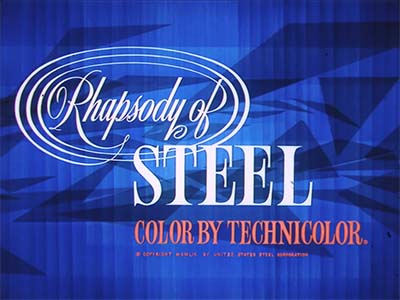
“Rhapsody Of Steel”
John Sutherland / 1959
John Sutherland’s studio was very influential in the mid-1950s, employing some of the best designers in the business. This film is no exception. Legendary stylists Eyvind Earle (Sleeping Beauty, Pigs is Pigs) and Maurice Noble (Duck Dodgers, How The Grinch Stole Christmas) collaborated on Rhapsody of Steel, and you can see evidence of both of their hands everywhere in this film. (Earle in the landscapes and textures, Noble in the bold primary and secondary colors…)
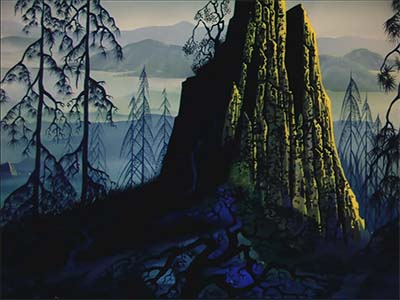
Time Magazine said of this film…
Rhapsody of Steel, a 23-minute animated cartoon that cost $300,000, is one of those rare industrial films with enough specific quality and general interest to play the commercial circuits. In the next few months it will be shown as an added attraction in several thousand U.S. movie houses. Made by former Disney Staffer John Sutherland, Rhapsody sets out to tell a sort of child’s history of steel from the first meteor that ever hit the earth to the first manned rocket that leaves it, and most of the time Moviemaker Sutherland proves a slick entertainer and a painless pedagogue. Unhappily, the music of Oscar-Winning Dmitri Tiomkin, who is probably the world’s loudest composer, bangs away on the sound track like a trip hammer. But the picture’s pace is brisk, its tricks of animation are better than cute, and the plug, when the sponsor slips it in on the final frame, is modestly understated: “A presentation of U.S. Steel.”
As always, many thanks to Steve Stanchfield for sharing his treasures with us. If you haven’t already, check out the videos at his Thunderbean Animation Store at Amazon.
Click to access the…
Downloads expire after June 2024
If you are currently on a quarterly membership plan, consider upgrading to an annual membership to get access to our bonus page with even more downloads. If you still have time on you quarterly membership when you upgrade to an annual membership, email us at…
membership@animationresources.org
…and we will credit your membership with the additional time. These bonus downloads expire after January 1st, 2024.
JOIN TODAY To Access Members Only Content
Whew! That is an amazing collection of treasures! The most important information isn’t what you already know… It’s the information you should know about, but don’t know yet. We bring that to you every other month.
THIS IS JUST THE TIP OF THE ICEBERG!
Animation Resources has been sharing treasures from the Animation Archive with its members for over a decade. Every other month, our members get access to a downloadable Reference Pack, full of information, inspiration and animation. The RefPacks consist of e-books jam packed with high resolution scans of great art, still framable animated films from around the world, documentaries, podcasts, seminars and MORE! The best part is that all of this material has been selected and curated by our Board of professionals to aid you in your self study. Our goal is to help you be a greater artist. Why wouldn’t you want to be a member of a group like that?
Membership comes in three levels. General Members get access to a bi-monthly Reference Pack as well as a Bonus RefPack from past offerings in the in-between months. We offer a discounted Student Membership for full time students and educators. And if you want to try out being a member, there is a Quarterly Membership that runs for three months.
JOIN TODAY!
https://animationresources.org/membership/levels/
FREE SAMPLES!
Not Convinced Yet? Check out this SAMPLE REFERENCE PACK! It will give you a taste of what Animation Resources members get to download every other month! That’s 560 pages of great high resolution images and nearly an hour of rare animation available to everyone to download for FREE! https://animationresources.org/join-us-sample-reference-pack/
![]()
![]() Animation Resources depends on your contributions to support its projects. Even if you can’t afford to join our group right now, please click the button below to donate whatever you can afford using PayPal.
Animation Resources depends on your contributions to support its projects. Even if you can’t afford to join our group right now, please click the button below to donate whatever you can afford using PayPal.















